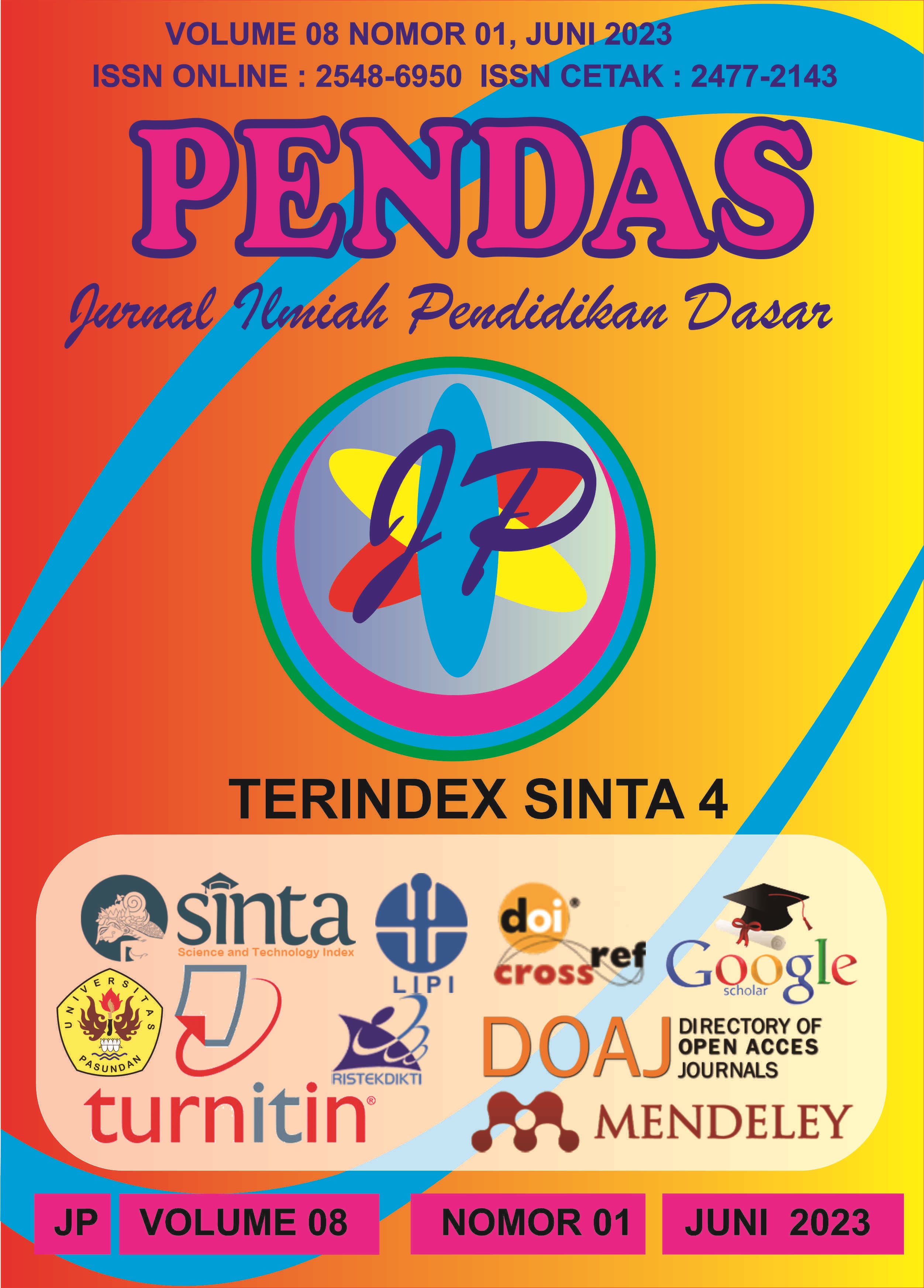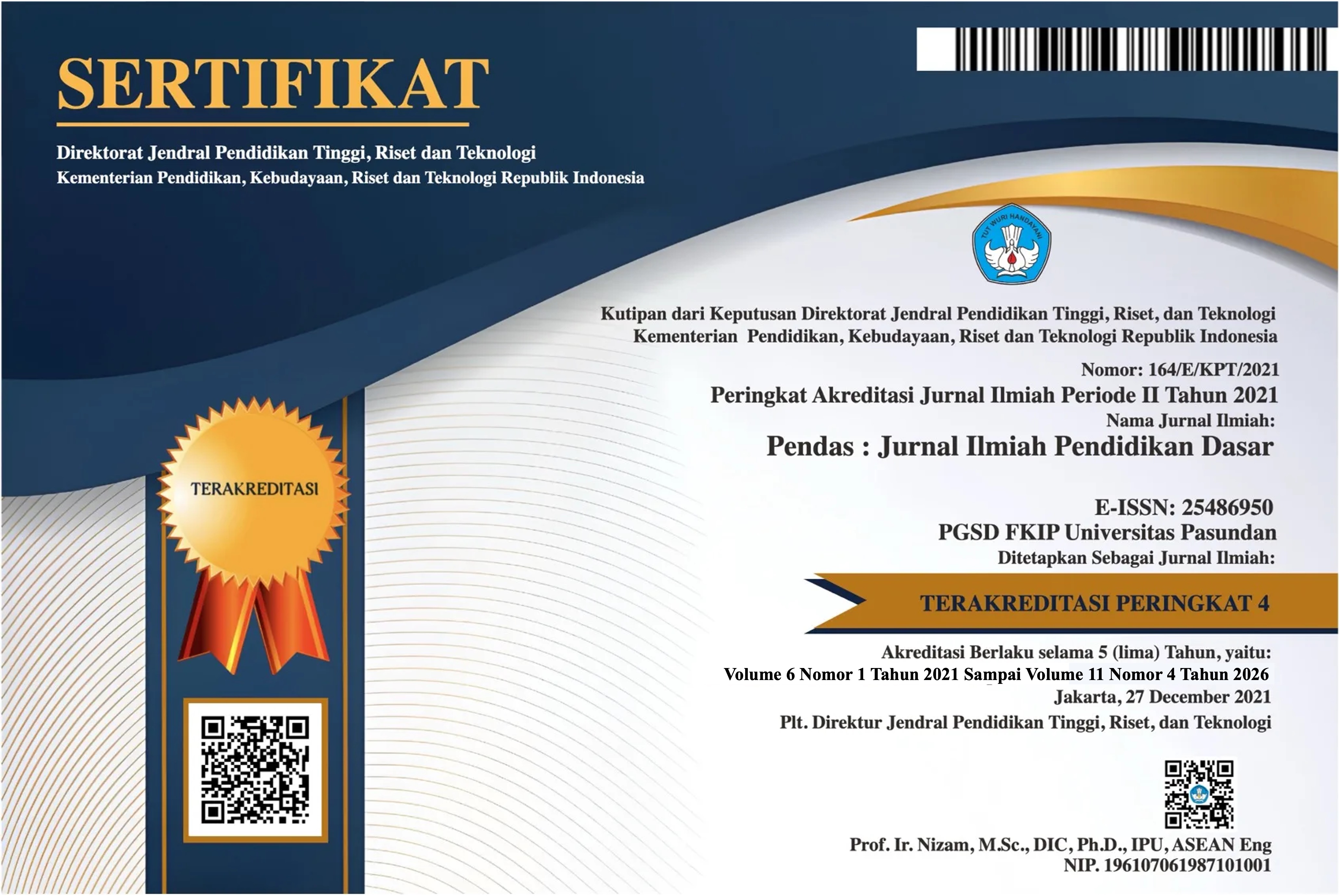PENGEMBANGAN MEDIA SCIENCE COMIC UNTUK MELATIH KECERDASAN VISUAL-SPASIAL SISWA
DOI:
https://doi.org/10.23969/jp.v8i1.9016Keywords:
science, comic, efeectiv, validity, practicalityAbstract
Children aged 7-12 years experience development in thinking that was originally pre-operational to concrete, concrete to abstract. Learners who are slow in their intellectual reading capacity can be helped with comics. The research that has been done aims to see the validity of the media science comic and the continuity of the material with the media. The practicality of the media science comic can be seen from the observation of teachers and student questionnaires at each meeting. The meeting was held three times. Teacher observation is seen from the implementation of teacher teaching steps. Student questionnaires are conducted to see student responses about the media so that changes are visible after the meeting. The effectiveness of the media science comic is seen from the students' pretest and posttest scores according to existing indicators. Pretest is done before using media and posttest students are done by learning using media. And there is a difference between before and after using the media. The study method is carried out by tests, validation, observation, questionnaires. The results obtained from this study that the binding media are valid, effective, and practical and get a very good category assessment.Downloads
References
Affeldt, F., Meinhart, D., & Eilks, I. (2018). The Use of Comics in Experimental Instructions in a Non-formal Chemistry Learning Context. International Journal of Education in Mathematics, Science and Technology, 92-104.
Arinii, F. D., Choiri, A. S., & Sunardi. (2017). The Use Of Comic As A Learning Aid To Improve Learning Interest Of Slow Learner Student. European Journal of Special Education Research, 71-78.
Armstrong, T. (2013). Kecerdasan multipel di dalam kelas. Jakarta: Indeks.
Arroio, A. (2011). Comics As A Narrative In Natural Science Education. Western Anatolia Journal of Educational Sciences, 93-98.
Azizi, M., & Prasetyo, Sigit. (2017). Kontribusi Pengembangan Media Komik Ipa Bermuatan. AL-BIDAYAH: Jurnal Pendidikan Dasar Islam, 75-83.
Djiwandono, S. E. (2002). Psikologi Pendidikan. Jakarta: PT Grasindo.
Ibmian, K. S., & Hadban, A. D. (2013). Implications of multiple intelligences theory in ELT field. International Journal of Humanities and Social Science, 292-297.
Kurniati, D., Sunardi, Trapsilasiwi, D., Sugiarti, T., & Alfarisi, M. A. (2018). Thinking Process Of Visual-Spatial Intelligence Of 15 Year-Old Students In Solving Pisa Standard Problems. Turkish Online Journal of Educational Technology, 1-9.
Lutfikah , & Nurhasanah . (2020). Penggunaan Media Komik Dapat Meningkatkan Hasil Belajar Ipa Di Sekolah Dasar. Jurnal Pendidikan dan Pengajaran, 86-92.
Šafranj, J., & Zivlak, J. (2018). Spatial-Visual Intelligence In Teaching Students Of Engineering. Research in Pedagogy, 7183.
Sajudin, M., & Habibah, N. (2021). Pengaruh Bermain Lego Konstruktif Terhadap Kecerdasan Visual Spasial Anak Usia Dini Kelompok Adi Raudhatul Athfal (Ra) Darul Muqomah Bulung Kulon Jekulo Kudus Tahun 2019/2020. Jurnal Studi Islam dan Sosial, 46-62.
Setiani, Y., & Rafianti, I. (2018). Pengaruh Tingkat Kecerdasan Visual-Spasial terhadap Literasi Kuantitatif Mahasiswa Calon Guru Matematika. Kreano, 38-46.
Subrata. (2019). Meningkatkan Hasil Belajar Siswa Melalui Pendekatan Visual Spasial. pedagogia Jurnal Ilmu Pendidikan, 23-34.
Thiagarajan, S., Semmel , D. S., & Semmel, M. I. (1974). Instructional Development for Training Teachers of Expectional Children. Minnesota: Leadership Training Institute/Special Education, University of Minnesota.
Downloads
Published
Issue
Section
License
Copyright (c) 2023 Pendas : Jurnal Ilmiah Pendidikan Dasar

This work is licensed under a Creative Commons Attribution 4.0 International License.



















